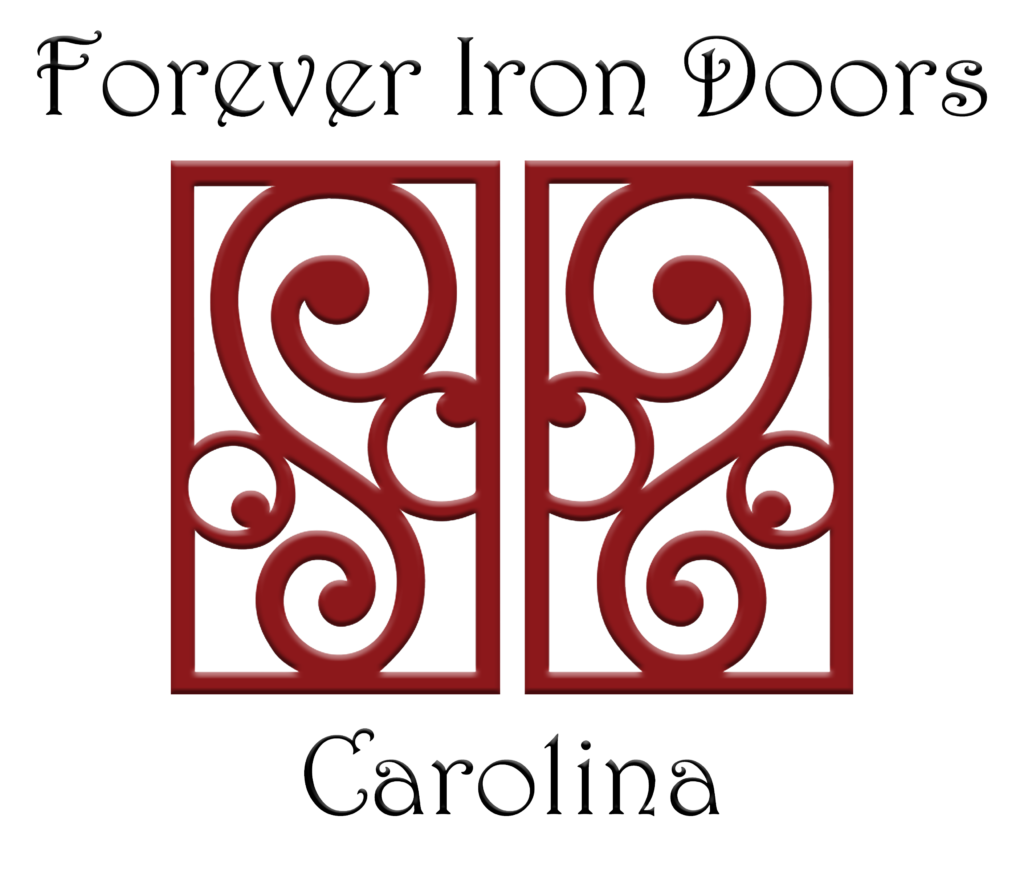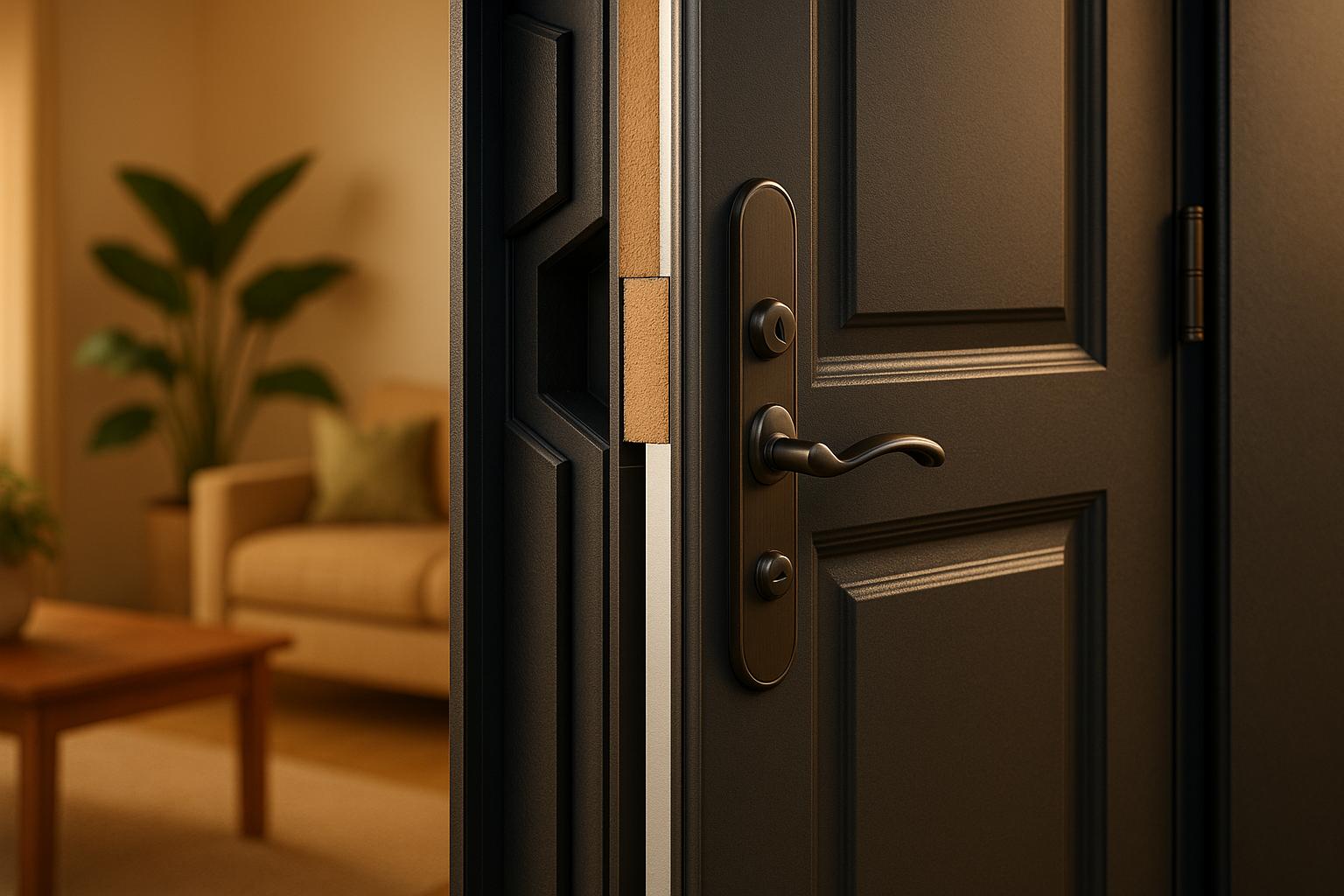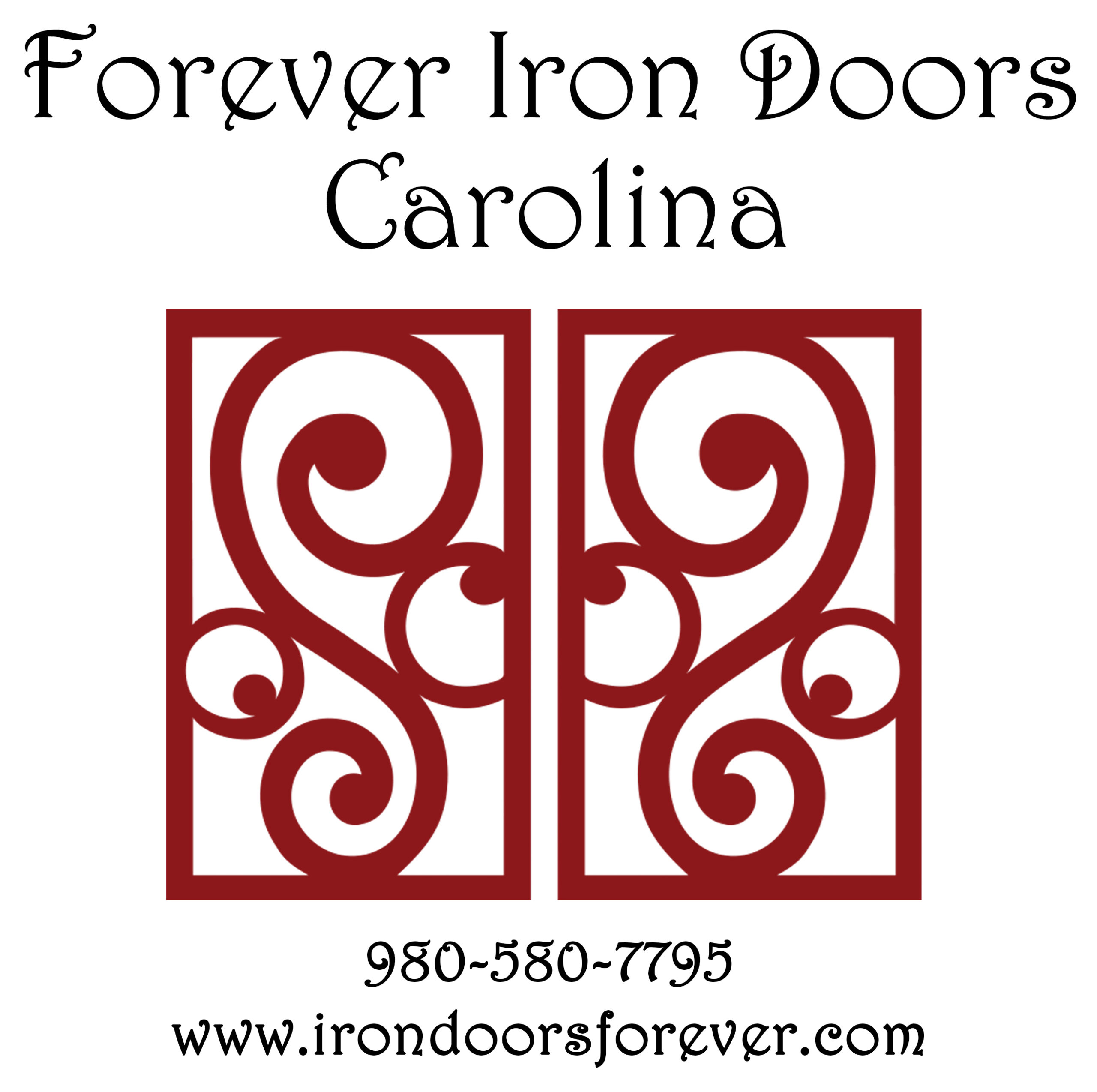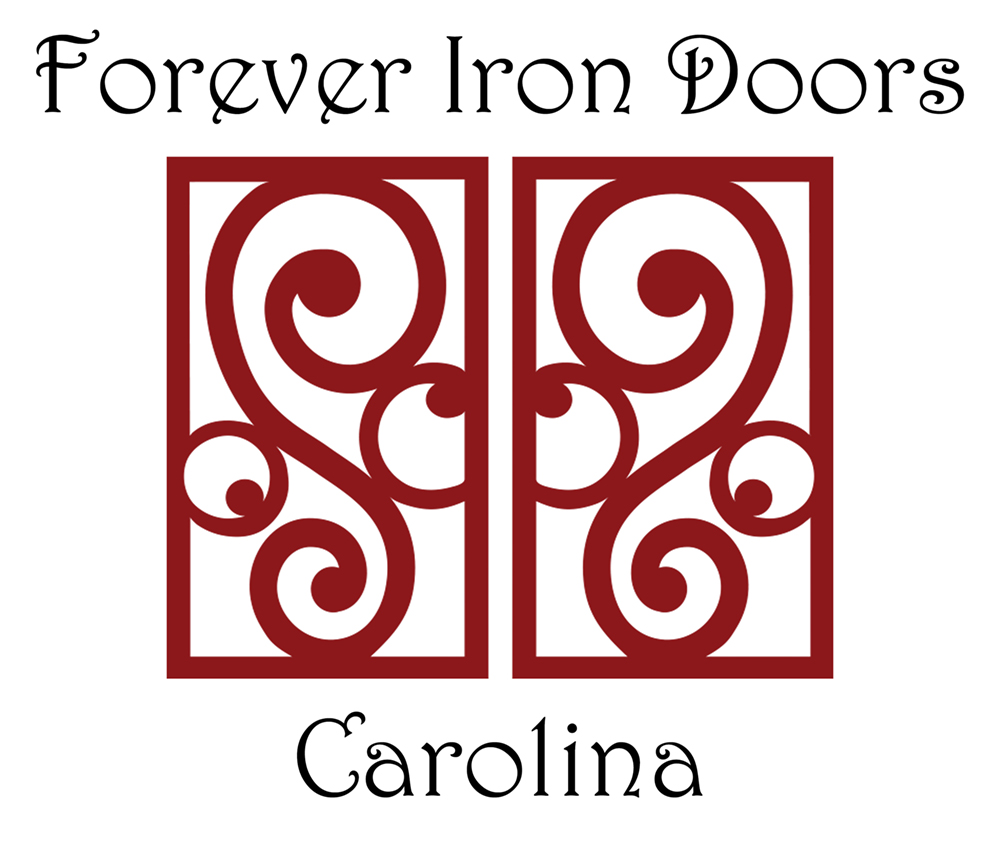Think iron doors aren’t energy-efficient? Think again. Modern iron doors have shattered outdated myths, offering performance on par with – or better than – wood and fiberglass doors. Here’s what you need to know:
- Myths Debunked: Iron doors are no longer inefficient. Advanced insulation, thermal breaks, and weatherproofing have transformed their energy performance.
- Key Features: Foam-filled cores, multi-pane glass with Low-E coatings, and tight weatherstripping prevent energy loss and drafts.
- Durability: Unlike wood or fiberglass, iron doors resist warping, rotting, and fading, lasting decades while reducing waste.
- Eco-Friendly Design: Fully recyclable materials and energy-saving features lower your carbon footprint and utility bills.
Modern engineering proves iron doors aren’t just stylish – they’re practical, durable, and energy-efficient. Ready to upgrade? Let’s dive into the details.
Common Myths About Iron Door Energy Efficiency
Advancements in modern manufacturing have significantly improved the performance of iron doors, yet outdated designs continue to fuel common myths. Many of these misconceptions stem from a lack of understanding about how today’s iron doors are engineered to meet energy efficiency standards.
Here are three common myths about iron doors:
- They are inherently less energy-efficient than wood or fiberglass doors.
- Wrought iron doors cannot be insulated or weatherproofed effectively.
- Metal doors transfer too much heat or cold into homes.
Let’s break down each myth and explore how modern engineering has addressed these concerns.
Iron Doors Are Less Efficient Than Wood or Fiberglass
The belief that iron doors lag behind wood or fiberglass in energy efficiency stems from iron’s natural ability to conduct heat. It’s true that a solid iron door without any insulation or thermal barriers would allow heat and cold to pass through easily. However, this is no longer the case with today’s designs. Modern iron doors are built with advanced insulation systems, such as polyurethane foam cores, that rival or even surpass the performance of traditional materials. The misconception persists largely because older iron doors lacked these innovations, but current models have effectively closed the gap in energy performance.
Iron Doors Cannot Be Properly Insulated
This myth has its roots in older iron door designs, which were often hollow and lacked proper insulation. These traditional constructions, commonly found in historic buildings, gave the impression that iron doors were inherently poor at maintaining thermal performance. Modern iron doors, however, are a different story. They are designed with insulation techniques like foam-filled cores and advanced weatherstripping to ensure excellent thermal performance. While public perception may still be influenced by outdated designs, the reality is that modern manufacturing has made these doors highly energy-efficient.
Iron Doors Transfer Too Much Heat or Cold
The idea that iron doors allow excessive heat or cold to pass through is tied to the concept of thermal bridging. In older designs without thermal breaks, heat or cold could travel directly through the metal, leading to energy loss and issues like condensation on frames, hinges, and locks when there’s a significant temperature difference between indoors and outdoors. Today’s iron doors are equipped with thermal breaks and other design improvements that minimize these issues. As a result, modern iron doors effectively control energy transfer and maintain indoor comfort, even in extreme weather conditions.
Facts About Energy-Efficient Iron Doors
Modern iron doors have come a long way, thanks to engineering advancements that significantly improve energy efficiency. These features directly challenge outdated misconceptions about iron doors being inefficient.
Insulated Cores and Thermal Breaks
Energy-efficient iron doors today are built with insulated cores, often filled with foam insulation. This design, paired with thermal breaks, creates a strong barrier against heat transfer. Thermal breaks – non-conductive materials placed within the door frame – prevent heat from flowing through the metal, ensuring the door maintains its thermal performance without compromise.
Advanced Glass Options for Better Insulation
The glass in modern iron doors isn’t just for looks – it plays a big role in insulation. Many of these doors feature multi-pane glass with inert gas fills between the layers to improve thermal efficiency. Low-emissivity (Low-E) coatings on the glass reflect infrared energy, reducing heat gain or loss while still letting in natural light. To further enhance performance, warm-edge spacers are used to minimize heat loss around the edges of the glass.
Weatherstripping and Expert Installation
Weatherstripping is another critical element in boosting energy efficiency. Modern iron doors are designed with multi-point sealing systems that create a tight seal around the perimeter, reducing air leaks. Durable materials like EPDM rubber are commonly used because they remain flexible and effective in varying temperatures.
However, even the best materials and designs need proper installation to work as intended. Professional installation ensures the door frame is perfectly aligned and that the weatherstripping seals properly. Techniques like spray foam insulation can fill gaps between the frame and the opening, providing a snug fit. Expert installers also adjust door compression to eliminate any gaps, ensuring maximum energy efficiency.
Forever Iron Doors Carolina provides professional installation services that address these details with precision, ensuring every door performs at its best in terms of energy efficiency and overall functionality.
Key Features That Improve Iron Door Energy Efficiency
Energy-efficient iron doors rely on thoughtful design elements to create effective thermal barriers, ensuring better insulation and reduced energy loss.
One crucial aspect is the frame construction. Reinforced steel frames with thermal breaks help reduce heat transfer by supporting insulation within the frame. This design minimizes unwanted heat exchange, keeping your home more comfortable.
The thickness of the door also makes a difference. Thicker doors can house high-density foam cores, which significantly improve heat resistance. This added insulation helps maintain indoor temperatures, no matter the season.
Other design details, like engineered recessed hardware pockets, thermal washers on hinges, and insulated strike plates, work together to reduce thermal bridging. These small but impactful components prevent heat from escaping through the door’s weakest points.
A powder-coated finish does more than protect against corrosion; it also adds an extra layer of insulation. Additionally, the finish color can be chosen to reflect solar heat or provide passive heating, depending on your climate needs.
For doors with glass elements, high-performance glazing combined with a well-designed metal framework helps maintain thermal integrity. This pairing minimizes air infiltration while allowing natural light to brighten your space.
Adjustable threshold systems and advanced weatherstripping are also game-changers. Adjustable thresholds with integrated thermal breaks can be fine-tuned to ensure a snug bottom seal, even as the door settles over time or during seasonal shifts. Magnetic weatherstripping offers a long-lasting solution to prevent air leakage, maintaining the door’s efficiency throughout its lifespan.
At the forefront of these innovations, companies like Forever Iron Doors Carolina incorporate these energy-efficient features into their custom wrought iron doors. Their precision fabrication techniques not only reduce thermal bridging but also allow homeowners to customize door performance to suit specific climate conditions.
For even greater efficiency, many modern iron doors feature multi-chambered frame profiles. These profiles create extra thermal barriers within the door structure, offering enhanced insulation while reducing the overall weight compared to solid metal designs.
These features highlight how advanced engineering and thoughtful design make iron doors an energy-efficient choice for any home.
sbb-itb-cd90297
How Energy-Efficient Iron Doors Help the Environment
Energy-efficient iron doors do more than just lower energy bills – they also contribute to environmental well-being. From their design to their end-of-life recyclability, these doors are crafted with features that minimize their ecological footprint.
Long Lifespan Means Less Waste
Wrought iron doors are built to last, significantly reducing the need for frequent replacements and cutting down on landfill waste. Unlike wood, which can warp or rot, or fiberglass, which may fade or crack over time, wrought iron retains its strength and appearance for decades. This durability spreads the environmental costs of production, shipping, and disposal over a much longer period, making it a more sustainable choice.
Fully Recyclable at the End of Use
One of the standout features of wrought iron is its recyclability. Old iron doors can be melted down and reused without losing their strength or quality. This process reduces the need for new raw materials and helps keep waste out of landfills. Unlike synthetic materials in other door types, iron fits seamlessly into a sustainable cycle, making it an environmentally friendly option.
Energy-Saving Features
Modern iron doors are designed with energy efficiency in mind. Features like thermal breaks, insulated cores, and advanced weatherstripping help reduce the energy required to heat or cool a home. This not only eases the load on power grids but also lowers carbon emissions from electricity production.
Manufacturing and Transportation Efficiency
Thanks to their extended lifespan, the environmental impact of manufacturing and transporting wrought iron doors is spread out over many years, making them a more eco-conscious investment.
A Fit for Sustainable Building Goals
Energy-efficient iron doors align perfectly with green building standards and sustainable construction goals. Their durability, thermal efficiency, and recyclability make them a smart choice for homeowners looking to meet energy codes or achieve certifications like LEED. By combining energy savings with eco-friendly design, these doors support a broader push toward sustainable residential construction across the U.S.
Conclusion: Separating Myths from Facts
When it comes to the energy efficiency of iron doors, the facts speak louder than the myths. Modern wrought iron doors are now designed to rival – or even outperform – doors made from other materials in terms of thermal performance.
Thanks to advancements in manufacturing, the outdated belief that iron doors are inefficient has been thoroughly debunked. Today’s designs feature thermal breaks, insulated cores filled with high-performance closed-cell polyurethane foam, and low-e, dual-pane insulated glass with specialized coatings. These coatings reflect sunlight while still allowing natural light to brighten your home. Add heavy-duty weatherstripping and robust dual sealing systems, and you’ve got a door that minimizes heat loss and seals out drafts.
"Did you know that an average home loses 15% of heat through its doors?" – Mastercraft Doors
This statistic highlights just how much of a difference the right door can make – not just in improving comfort but also in lowering energy bills.
Beyond energy efficiency, modern iron doors offer exceptional durability. Unlike wood doors that can warp or rot and fiberglass doors that may fade or crack, iron doors are built to last. Their durability reduces the need for frequent replacements, cutting down on costs and waste. Plus, their recyclability makes them an environmentally conscious choice.
For homeowners in North and South Carolina looking to combine energy efficiency with standout curb appeal, Forever Iron Doors Carolina provides custom wrought iron door solutions equipped with these cutting-edge features.
With modern insulation and glazing technologies, today’s iron doors are proving they can match – or even surpass – the energy performance of doors made from other materials. The myths of the past are fading, giving way to a future focused on comfort, cost savings, and environmentally responsible design.
FAQs
How are modern wrought iron doors designed to be energy efficient compared to traditional materials like wood or fiberglass?
Modern wrought iron doors are designed with cutting-edge features that boost energy efficiency. These include insulated cores, thermal breaks, weatherstripping, and double-paned low-E glass. Together, these elements help reduce heat transfer and block air leaks.
With these advancements, wrought iron doors can perform as well as – or even better than – traditional options like wood or fiberglass, which often lack such specialized insulation. By limiting heat loss and improving thermal regulation, these doors not only enhance energy savings but also offer durability and timeless style.
What features make a wrought iron door energy-efficient and help reduce heat transfer and air leaks?
To make sure a wrought iron door helps with energy efficiency, focus on features like thermal breaks. These are insulating barriers, often made from materials like foam or polyurethane, that reduce heat transfer through the door. Pair this with high-quality weatherstripping and gaskets around the frame to seal gaps and cut down on air leaks.
If the door includes glass panels, look for insulated glass or those with low-E coatings, which can boost thermal performance. An insulated core inside the door is another great way to improve energy efficiency. Together, these elements can help maintain a comfortable indoor temperature and even lower your energy bills over time.
How do energy-efficient wrought iron doors help the environment and reduce energy costs?
Wrought iron doors designed for energy efficiency offer a practical way to help the environment. Their superior insulation helps regulate indoor temperatures, cutting down on the need for constant heating or cooling. This translates to lower energy use and a reduction in greenhouse gas emissions.
On top of that, these doors are incredibly durable and often recyclable. This means less waste and a reduced need for manufacturing replacements, which further lessens their environmental impact. By combining long-lasting quality with energy savings, they not only shrink a home’s carbon footprint but also help homeowners save on utility bills.



